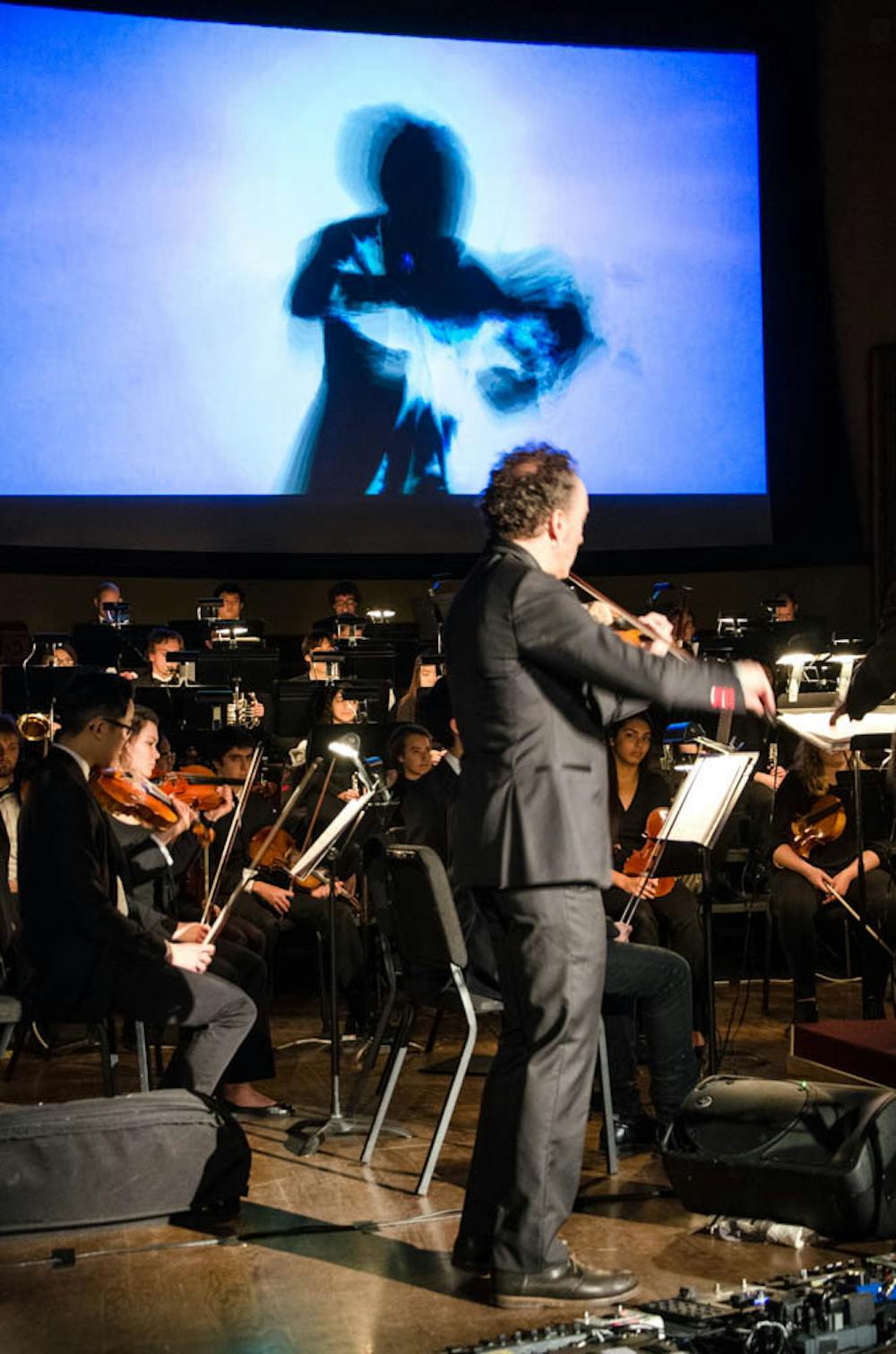The Brown University Orchestra performed “Love Song to the Sun” to accompany the song’s composer and electric violin soloist Tracy Silverman in the first concert of the semester Saturday. After the previous night’s performance was canceled due to inclement weather, Saturday’s concert brought a packed house of eager students, faculty and community members.
“Love Song to the Sun” follows the life of a gnat over 24 hours as it experiences birth, mating and death. In bringing the “level of what we would normally consider an insignificant creature to operatic … dimensions,” the piece makes the point that “every living thing has the right to life,” Silverman said. This concept “was the sort of parable of this piece — and in order to make that point, the music had to be very emotional,” he added.
The theme’s ramifications could expand to the way humans view the “hierarchy of people in our lives,” said Todd Winkler, professor of music and director of the doctoral program in multimedia and electronic music experiments, who created a video that accompanied the music and was projected on a screen behind the orchestra. “The video had to be compelling in order to draw people into this story,” Silverman said.
Though trained as a composer, this was the first time Winkler created a video with a live musician, as well as the first time he created a video for another person’s music.
The idea to combine music and video “started from this idea of re-envisioning the way a performer is on stage,” Silverman said, emphasizing that he wanted to create a “virtual self of myself that would be able to transform my appearance the way I transform my sound … to more fully embody the music,” Silverman added.
The visuals were not meant to completely pull the audience away from the performers, but rather, to enhance the performance by acting as a window into Silverman’s mind, Winkler added.
“I want the audience to see what I see in my head, and I don’t want to break that magic by having them look at me,” Silverman said.
Silverman, therefore, had to participate “visually as a player on the screen, rather than just be completely separate,” Winkler explained. He compared the score of the orchestra to the trajectory of the video. “In my mind, … the video score is right there in every measure, almost like it’s another instrument, … really integrated into the whole texture of the piece,” Winkler said.
At times, the projected images were slow-moving or static, depicting underwater scenes or the gnat’s-eye view of a pond. Motion detecting cameras allowed Silverman’s figure to be transposed onto the moving background, with different shapes and lines composing his form as the music changed. At the climax of the piece, computer-generated yellow orbs circled around his sihouette, growing and converging.
“Love Song to the Sun” was co-commissioned by Brown along with the Vanderbilt University Orchestra, Anchorage Symphony and Rogue Valley Symphony — which have all previously performed the same piece with Silverman. While the piece was commissioned two years ago and was intended to be performed last semester, it was pushed until this concert due to conflicts.
Silverman is a Juilliard-trained musician who has been at the forefront of the creation of the six-string electric violin since the 1980s, he said. At Saturday’s concert, he played his custom violin, which adds two lower strings to the usual four. Silverman left the classical world and traditional violin to move his sound closer to the guitar “because the guitar is more of an instrument of our current culture than the violin,” Silverman said. Different post-classical playing techniques, which he introduced to the string players in the University orchestra during workshops, include what he calls “strum bowing” to allow for a more rhythmic sound.
The concert began with “Overture to ‘Candide,’” which was chosen by Conductor and acting Music Director Daniel Harp in recognition of the 100th birthday of its composer, Leonard Bernstein, whose music is being played around the world this year in celebration, Harp said.
The concert concluded with “Symphony No. 2 in D Major, Opus 43,” by Finnish composer Jean Sibelius. Sibelius was “very, very sensitive to nature, and much of his music is about his feelings about nature or his responses to being in nature,” Harp said, drawing a connection between this choice and Silverman’s focus on the life of an insect. Sibelius incorporates intellecual elements as well as natural ones to create “a very dynamic, elemental nature to the music,” Harp said. “It’s like music you could imagine if you were standing on a mountaintop, or music you would imagine looking at an iceberg.”





